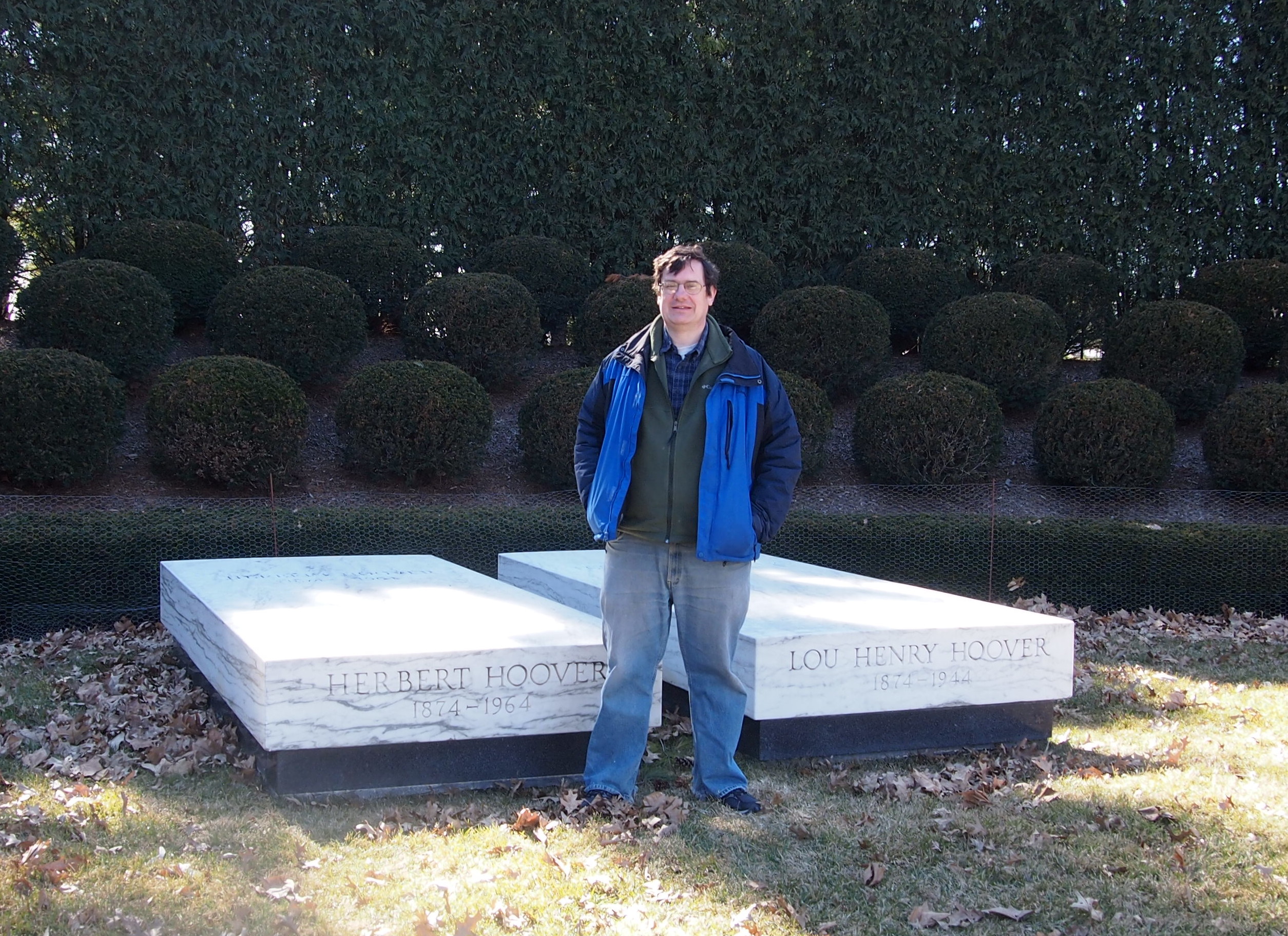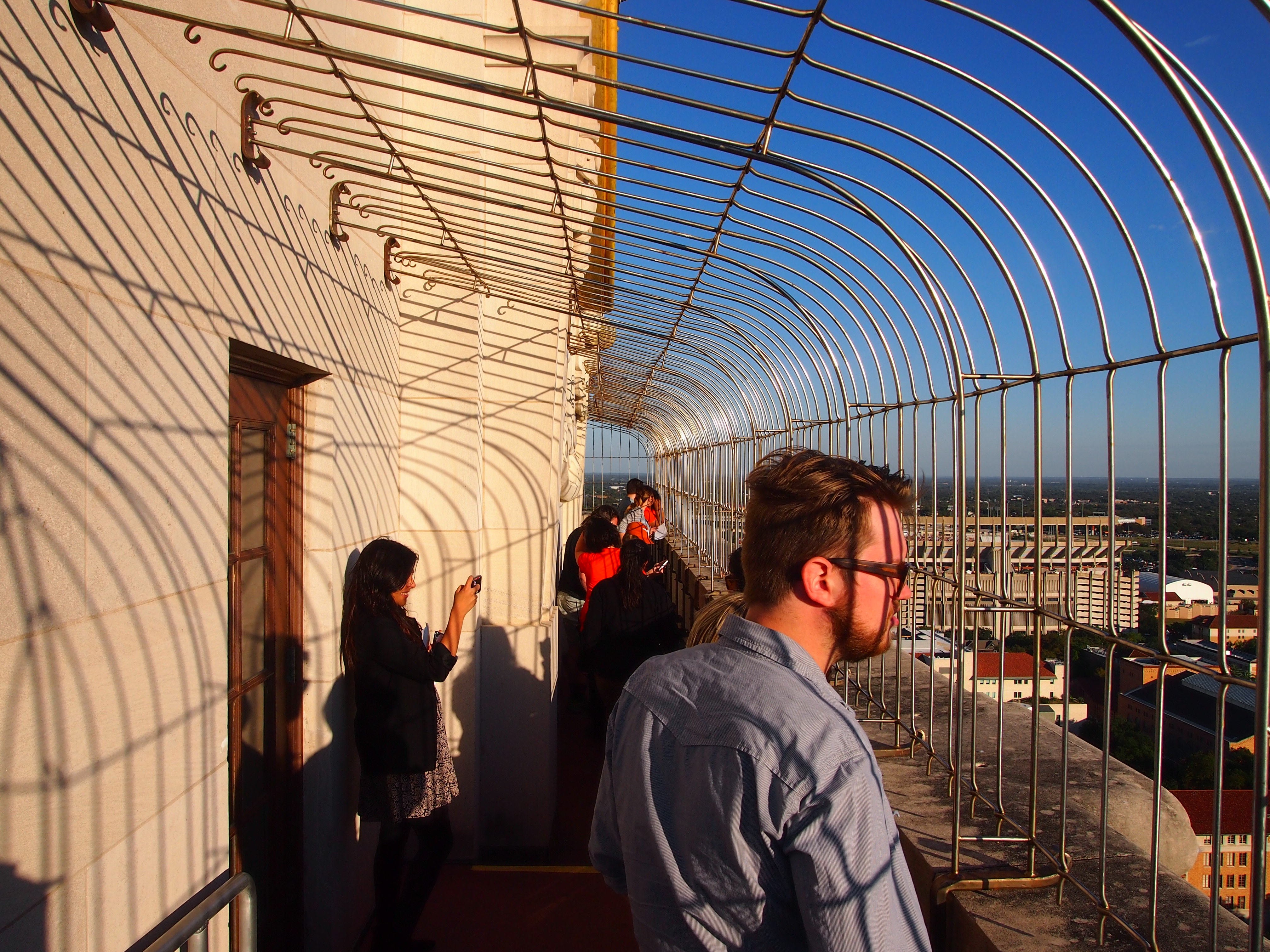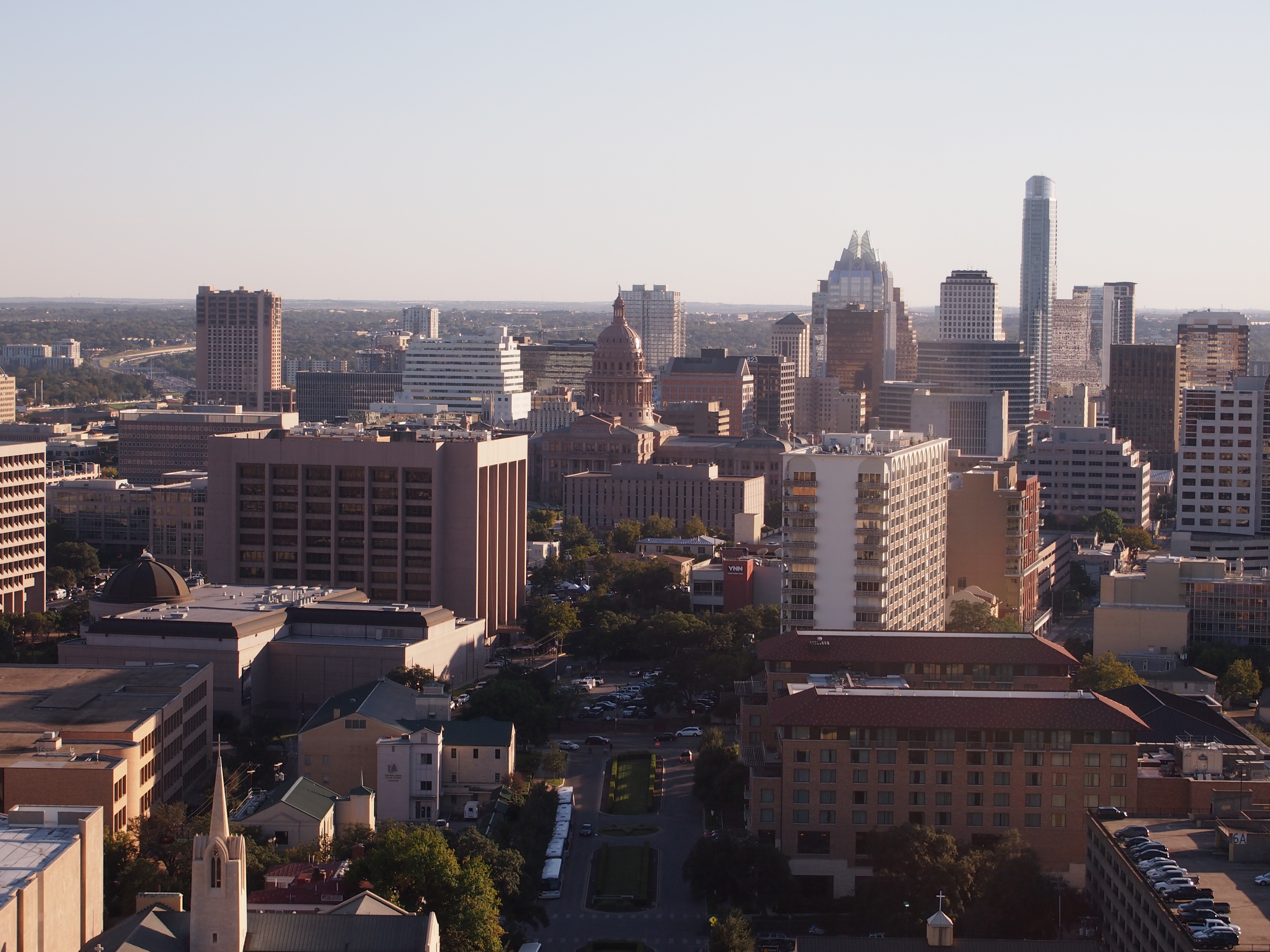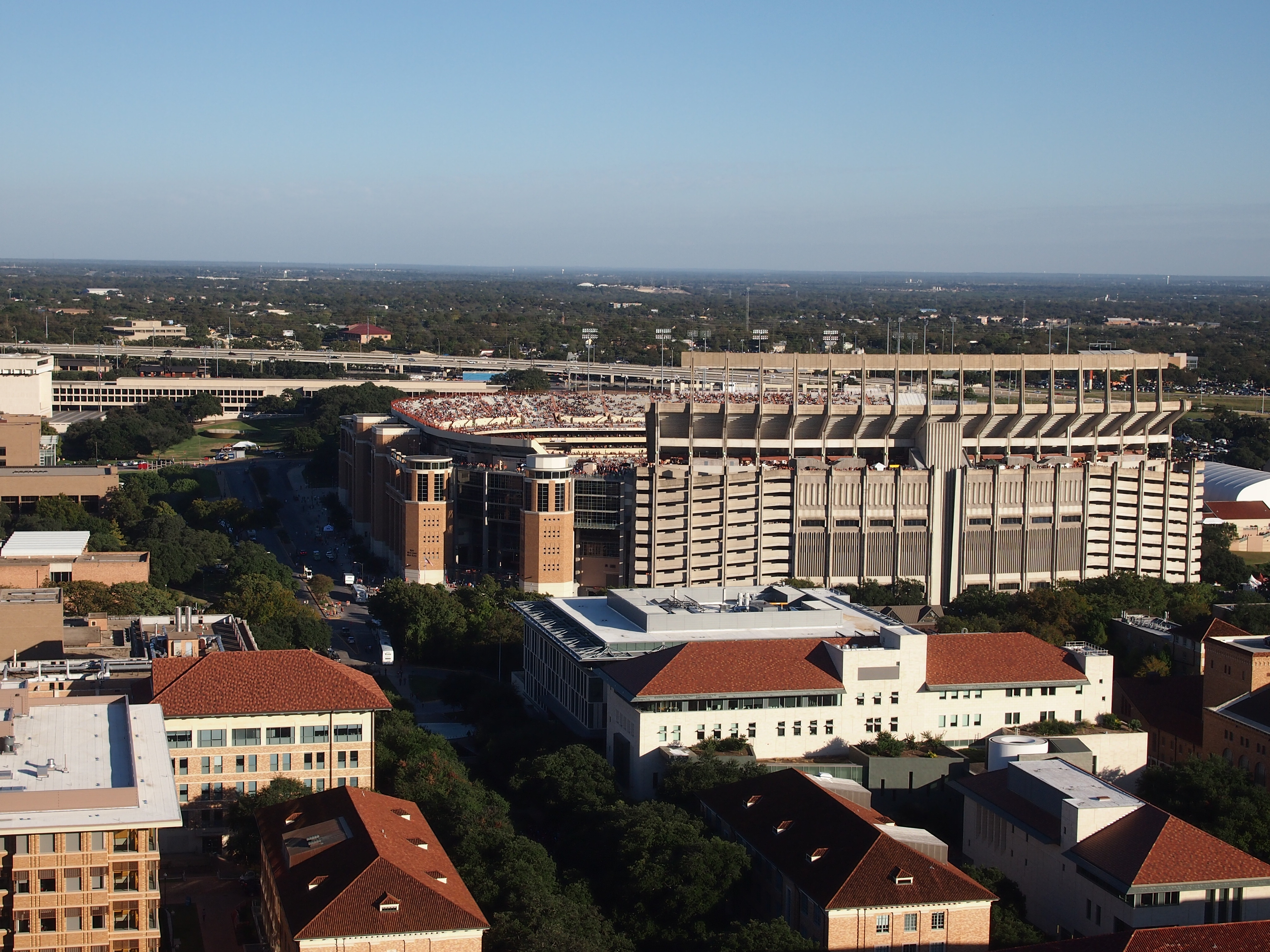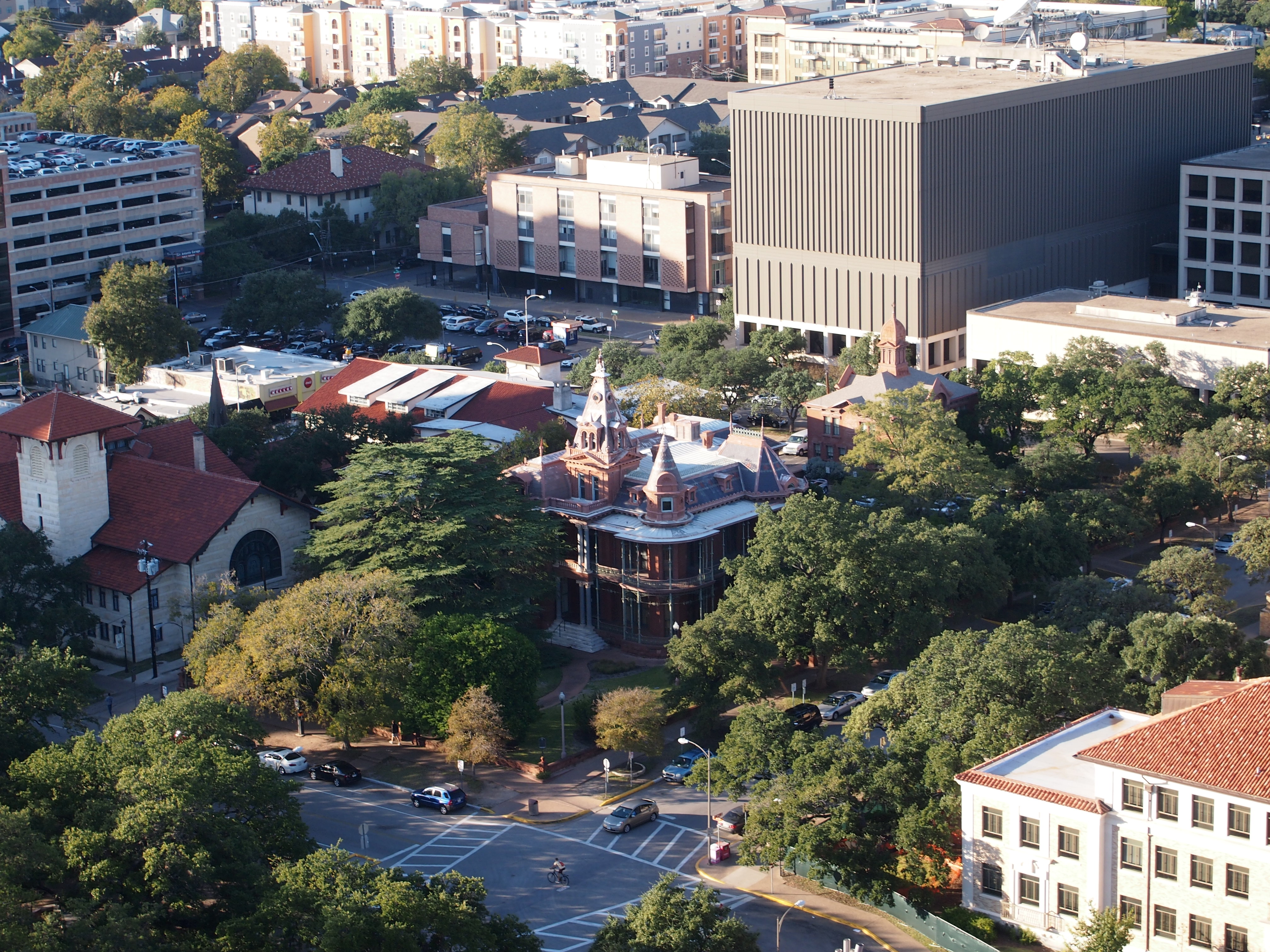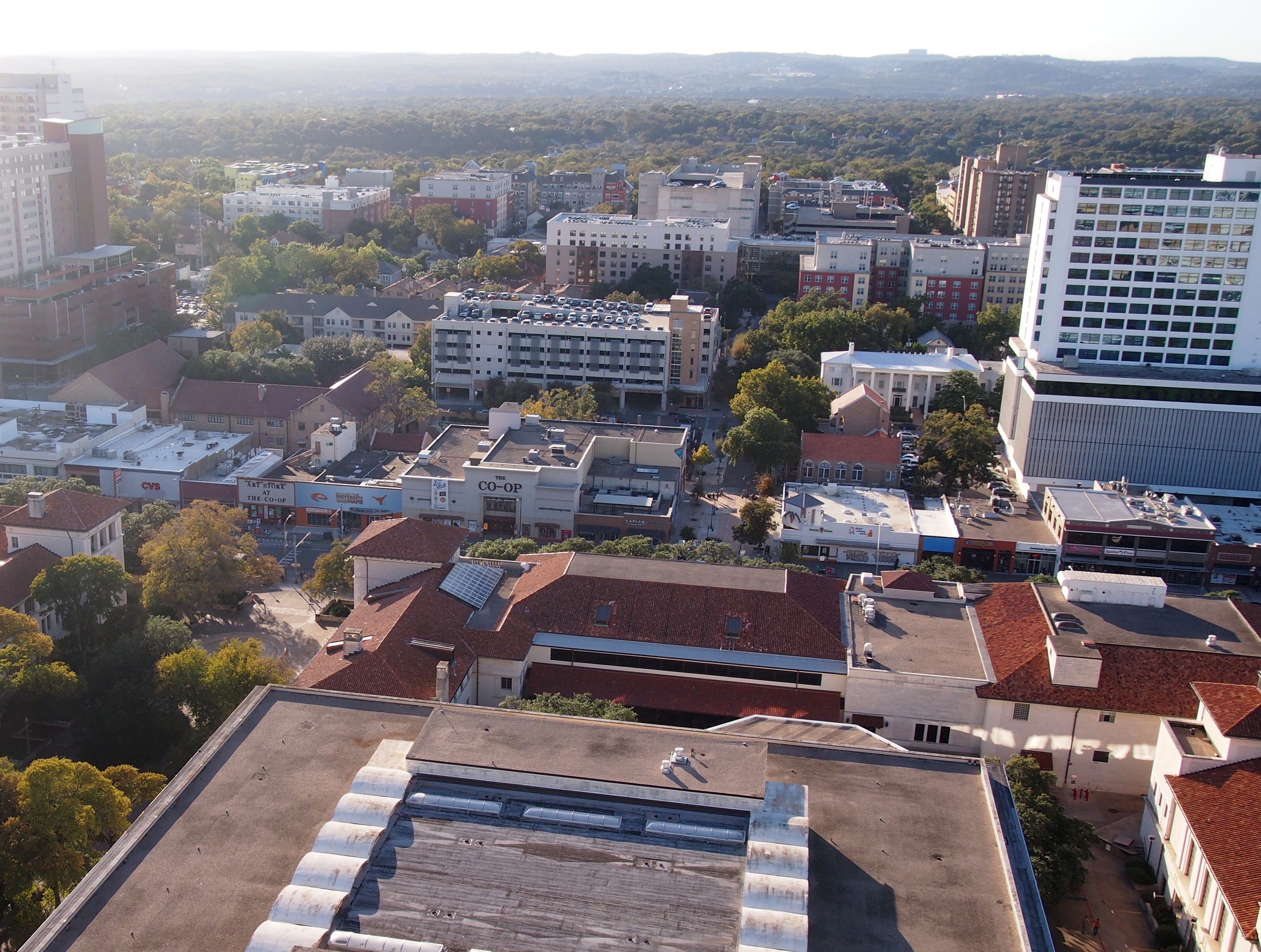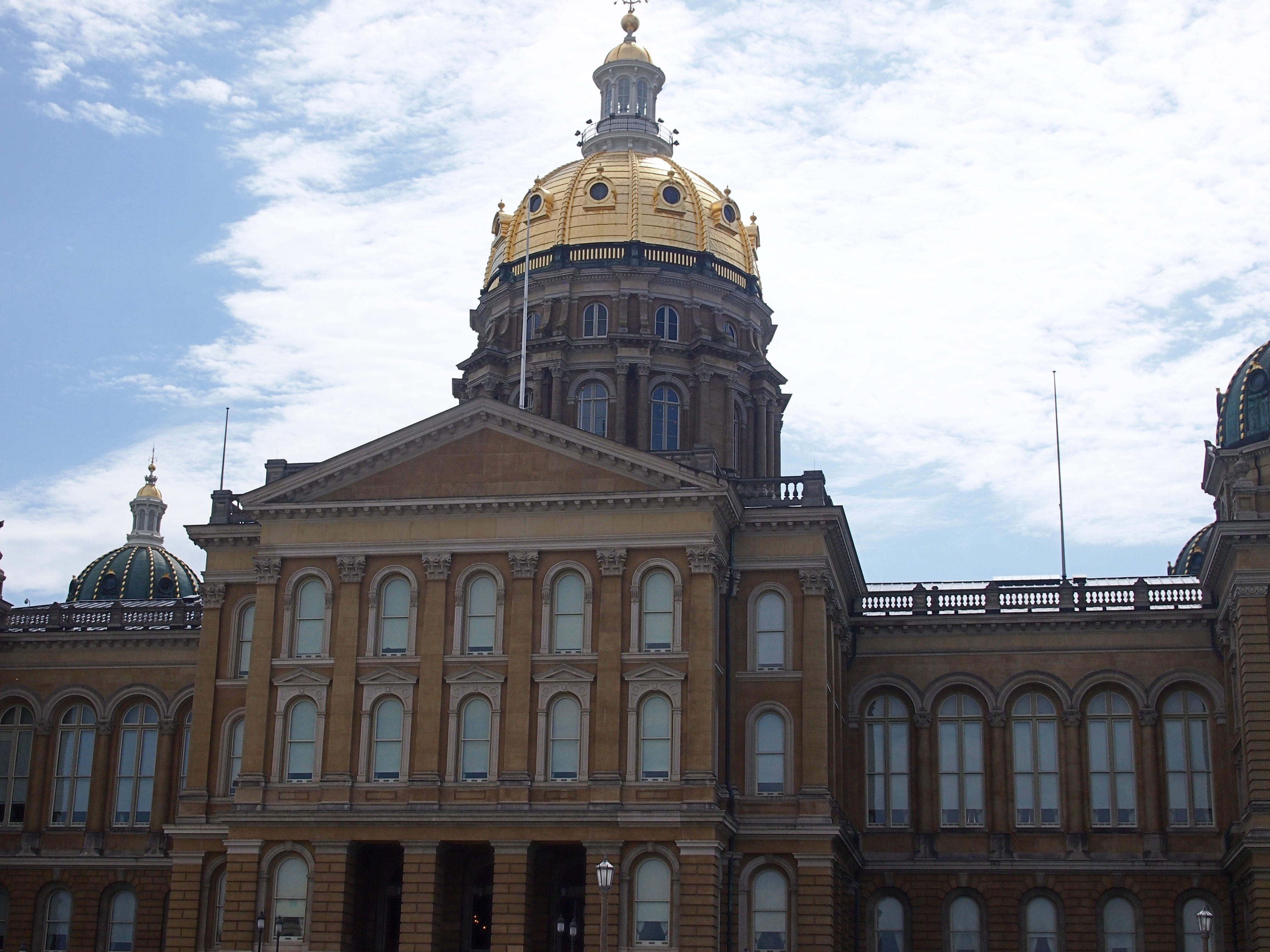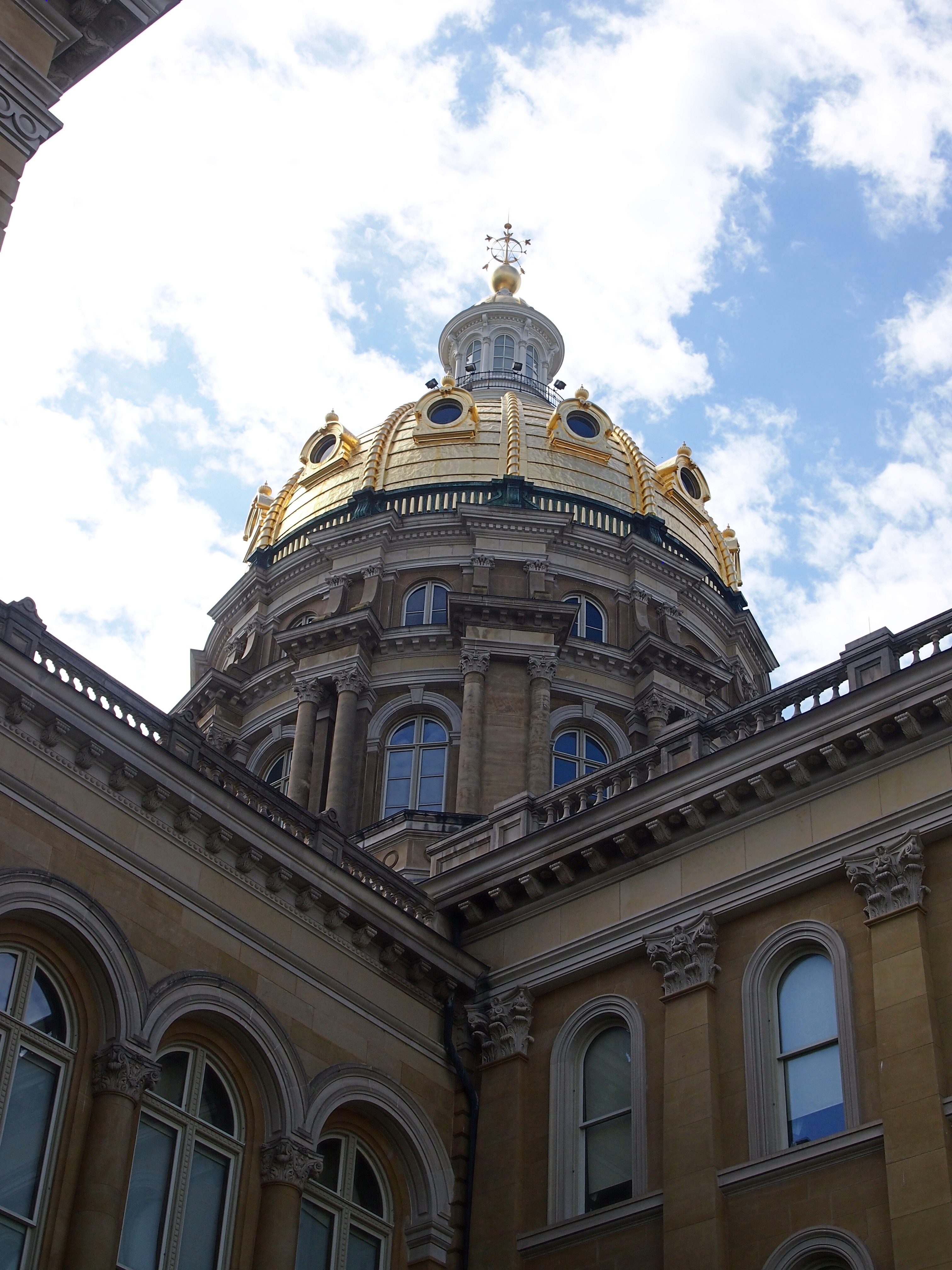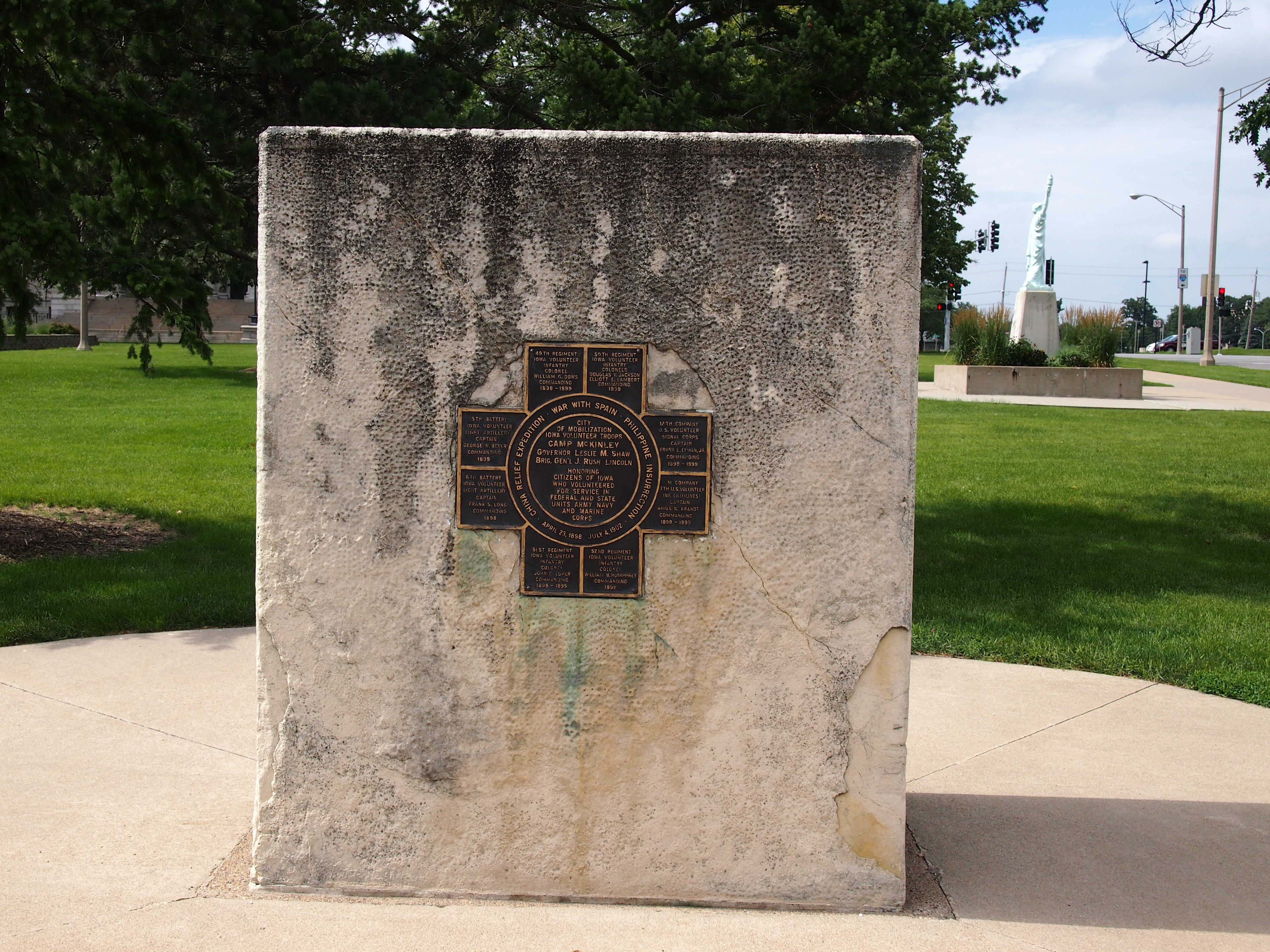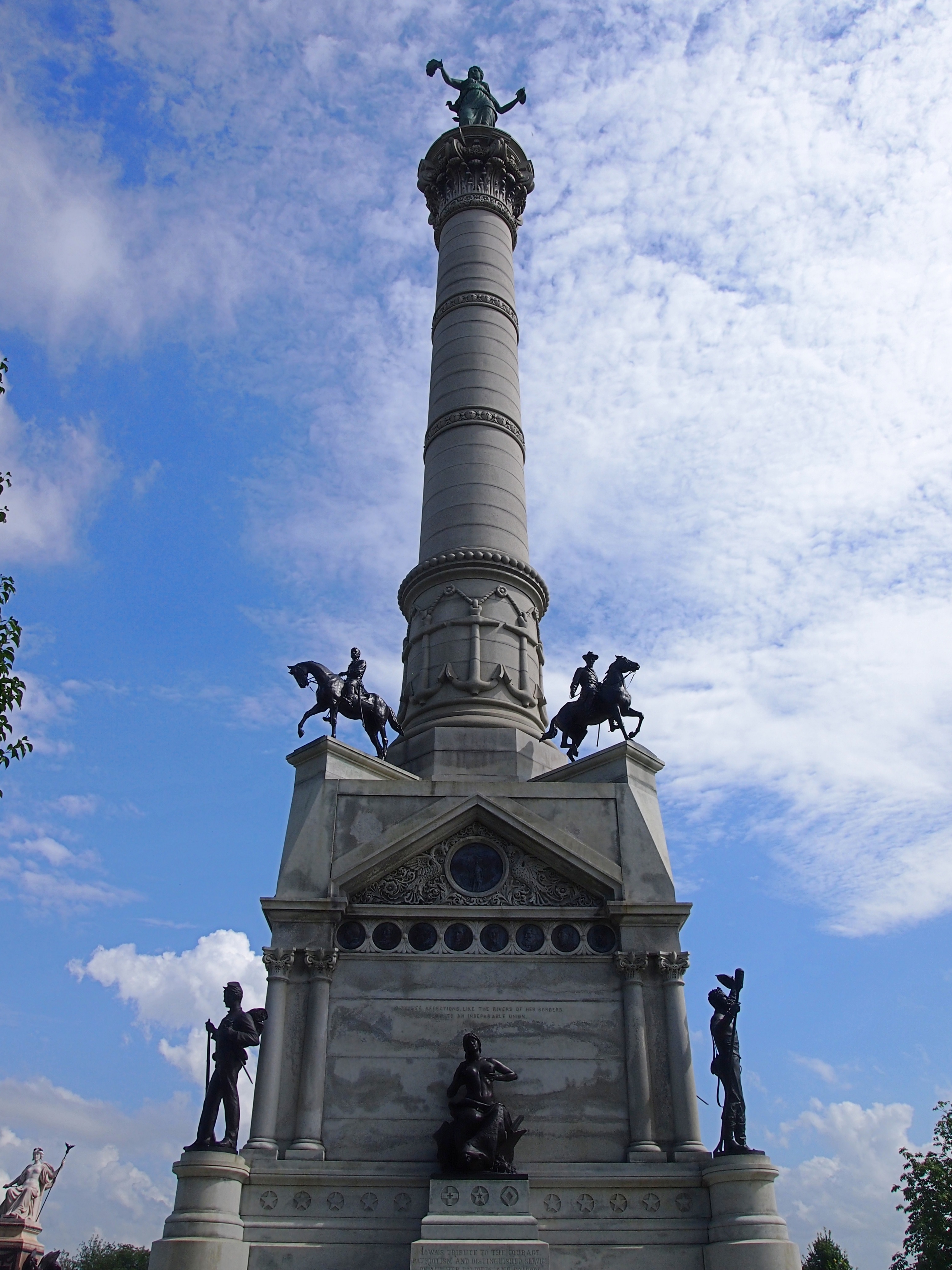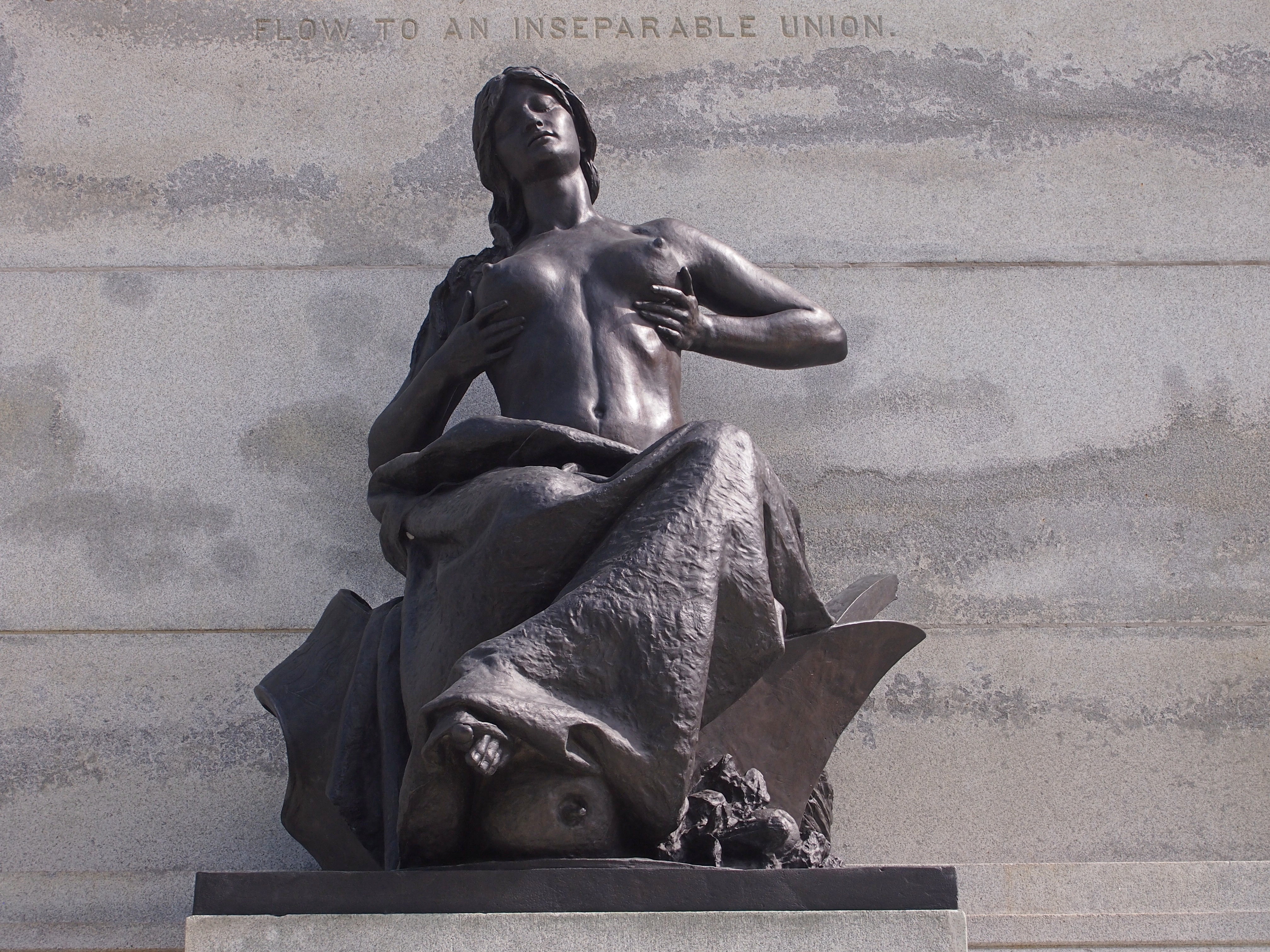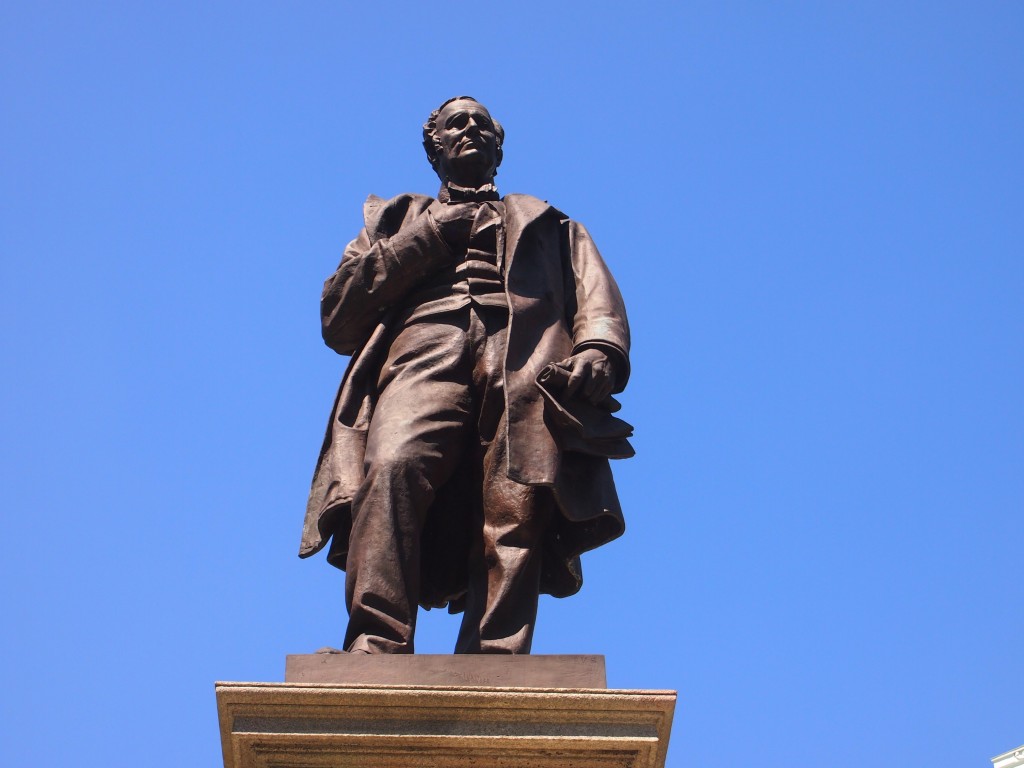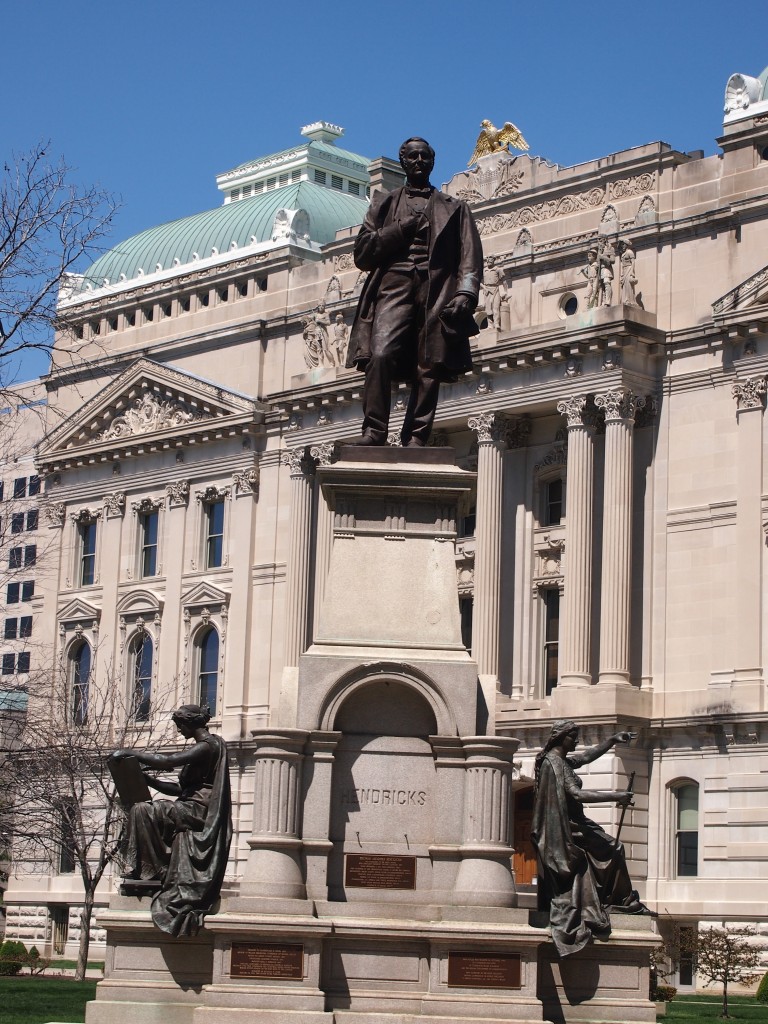I’m glad to report that the Old Capitol in Iowa City, now part of the University of Iowa but formerly the territorial capitol and then the first Iowa state capitol, has recovered from the fire of 2001. It’s in fine shape these days.
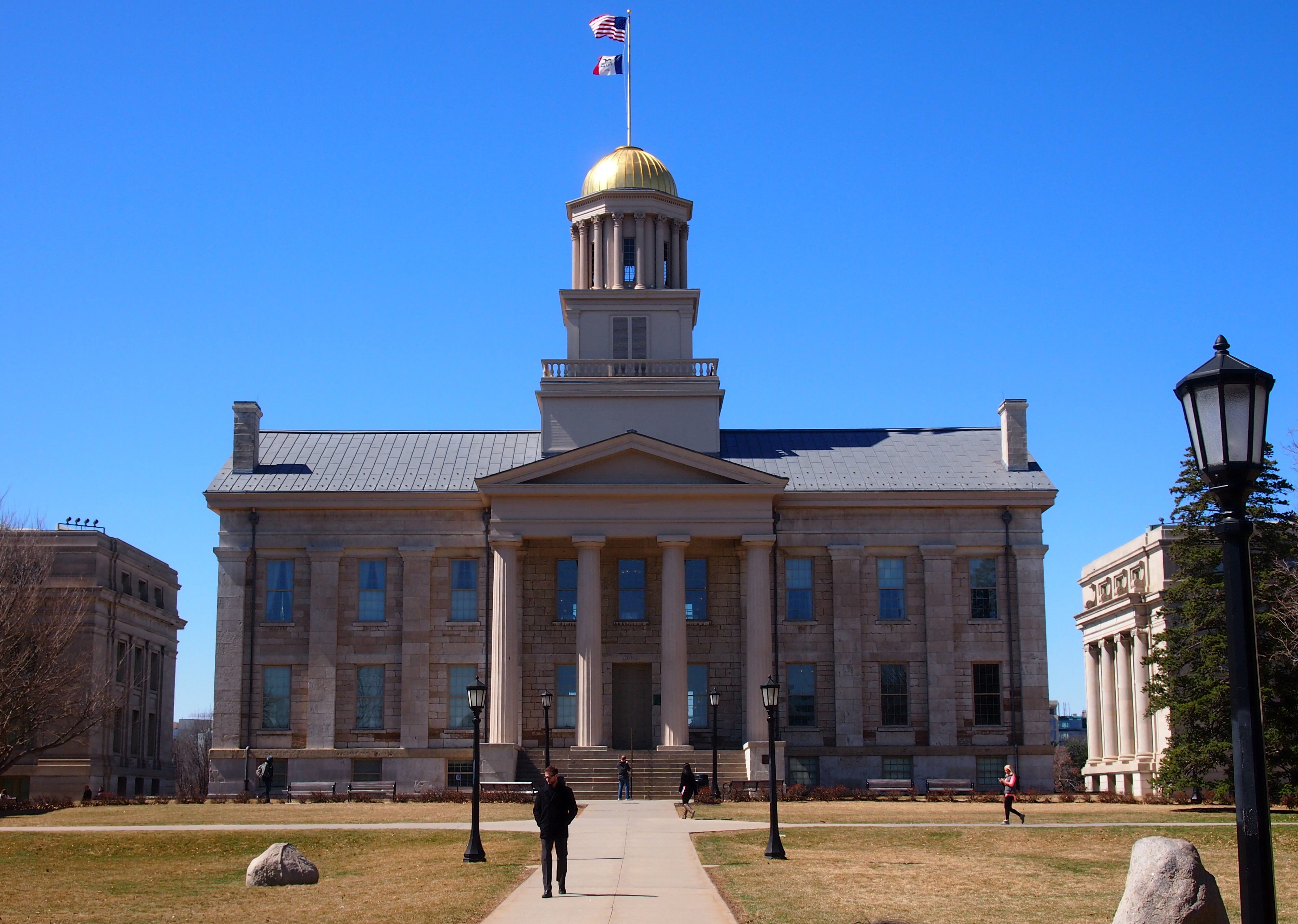 When we visited town that year, before the fire, the building was closed for renovations. A workman accidentally set its dome on fire that November, and so the building was closed much longer than planned, until 2006. As a fan of capitols, both former and present (an example of each: Florida and Louisiana), I was happy to get a look inside this time around, in the old House and Senate chambers, the Iowa Supreme Court’s former chamber, the old state library, the spiral central stairs, and more. All well-appointed with period artifacts.
When we visited town that year, before the fire, the building was closed for renovations. A workman accidentally set its dome on fire that November, and so the building was closed much longer than planned, until 2006. As a fan of capitols, both former and present (an example of each: Florida and Louisiana), I was happy to get a look inside this time around, in the old House and Senate chambers, the Iowa Supreme Court’s former chamber, the old state library, the spiral central stairs, and more. All well-appointed with period artifacts.
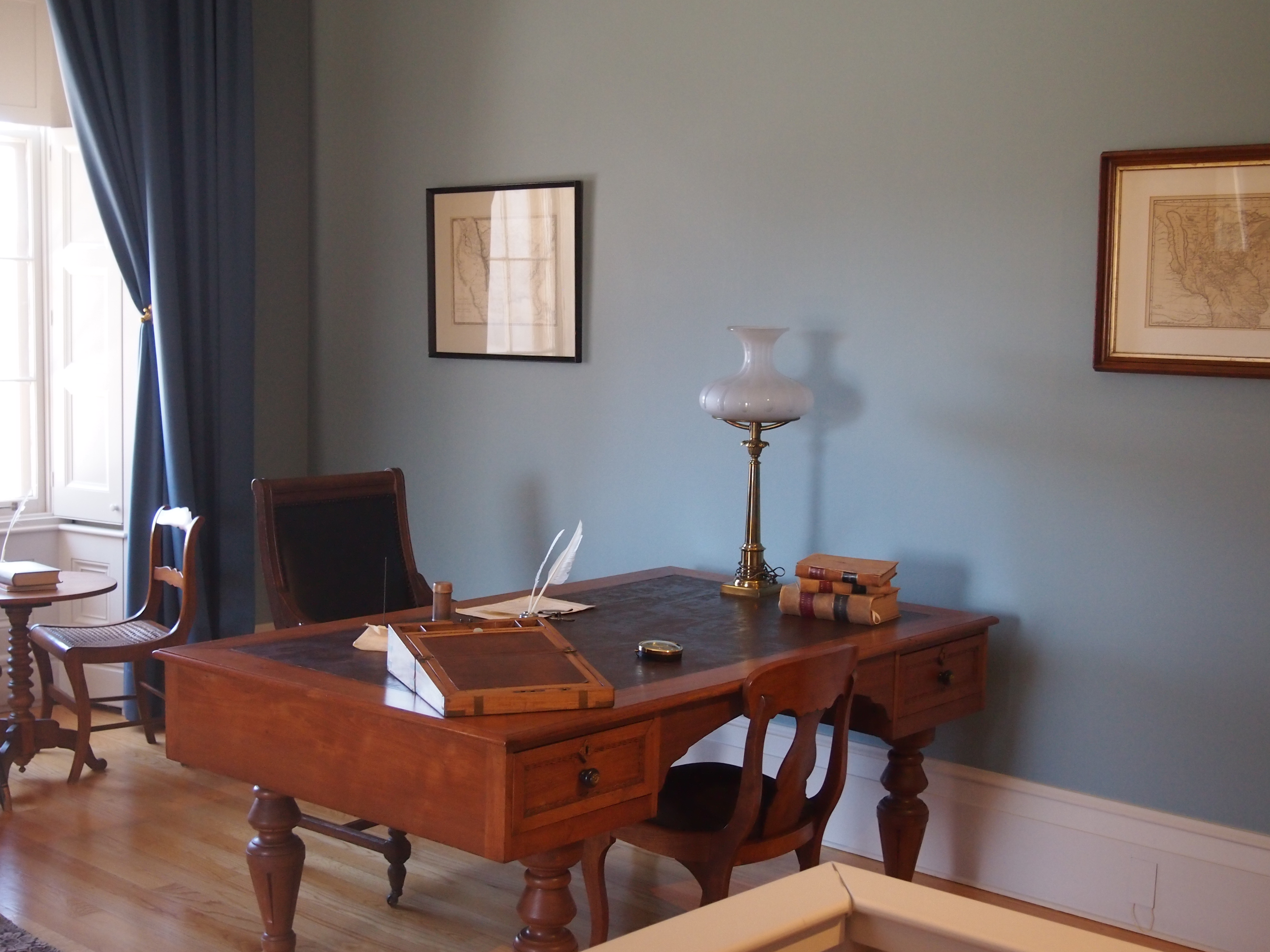 As usual with this kind of museum, I wondered, where’s the clutter? Pictured above is a tidy, nearly empty desk. An actual desk of an actual 19th-century government official would have had more papers and other debris. Maybe all kinds of clutter — documents, newspapers, books, a half-eaten lunch, the works. The quill pens wouldn’t be arrayed upright, ready to write. They’d be scattered around the desk, or maybe left in other parts of the room, leading the user to scrounge around and mutter, “Where in the blazes is that pen?”
As usual with this kind of museum, I wondered, where’s the clutter? Pictured above is a tidy, nearly empty desk. An actual desk of an actual 19th-century government official would have had more papers and other debris. Maybe all kinds of clutter — documents, newspapers, books, a half-eaten lunch, the works. The quill pens wouldn’t be arrayed upright, ready to write. They’d be scattered around the desk, or maybe left in other parts of the room, leading the user to scrounge around and mutter, “Where in the blazes is that pen?”
Which leads to another question: weren’t quills old hat by the 1840s and ’50s, when this was a government building? I know nub pens were being manufactured in quantity by then, but maybe they were still scarce in the Iowa Territory.
In the lower level of the Old Capitol is the what’s left of the old bell, a victim of the 2001 fire.
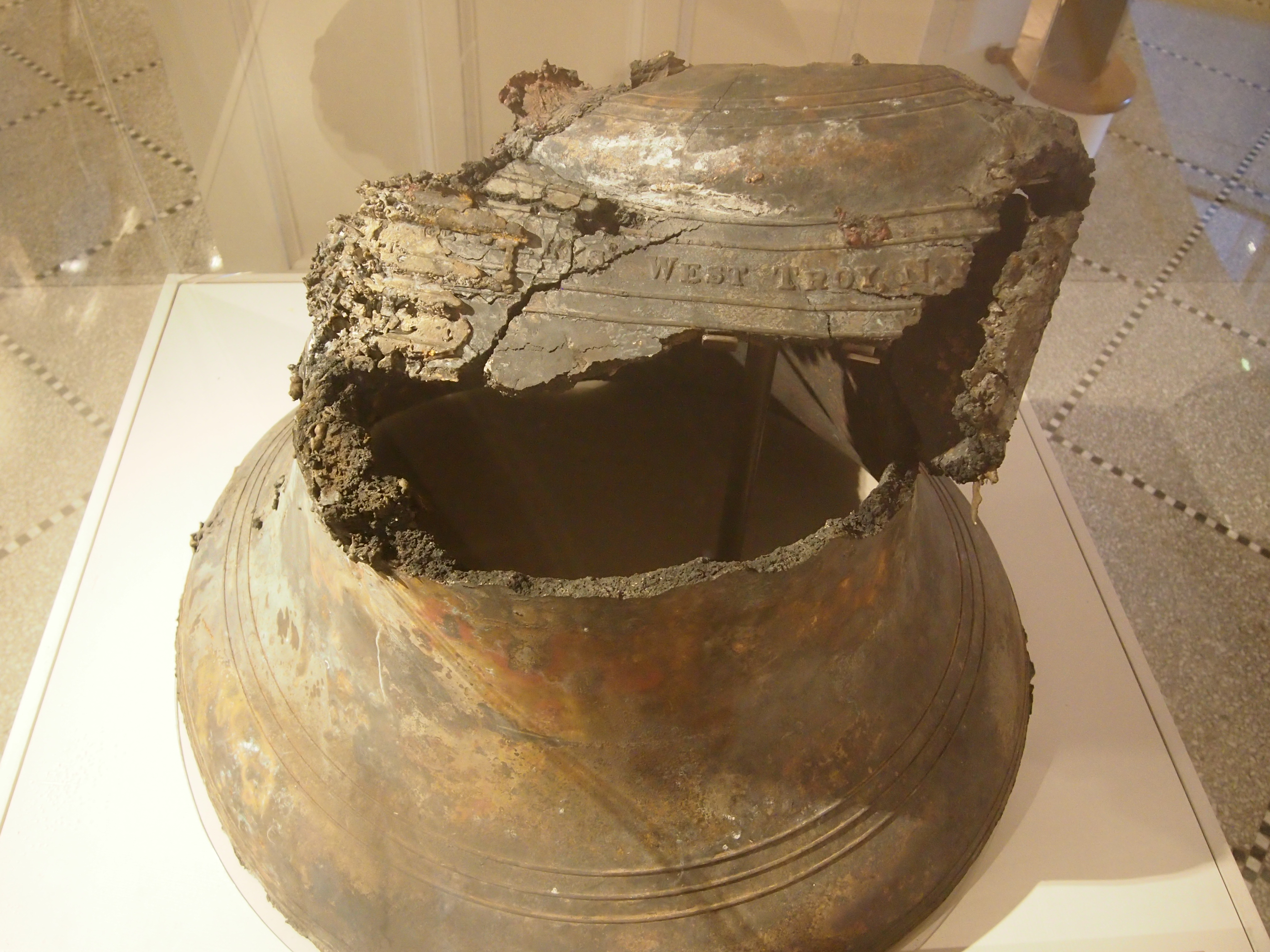 The sign next to the ruined bell tells us, “Housed inside the tower was Old Capitol’s third bell, which fell when its wooden yoke burned. The bell broke around the neck and landed on its side in the tower debris.
The sign next to the ruined bell tells us, “Housed inside the tower was Old Capitol’s third bell, which fell when its wooden yoke burned. The bell broke around the neck and landed on its side in the tower debris.
“The mass of mangled metal shown here is all that remains of the 1864 bell — the only casualty from more than 750 artifacts. Twists and turns in the metal reveal nails, pieces of copper and gold leaf from the building’s original construction.”
The university managed to acquire a replacement bell much like this one, only in better shape. The sign continues: “During the tower reconstruction, Old Capitol staff located a similar antique bell from the Verdin Bell Company in Cincinnati… this bell was cast by the same foundry as the burned bell, is approximately the same age, and, at 1500 pounds and 42 inches in diameter, is slightly heavier and wider than the 1864 bell.”
